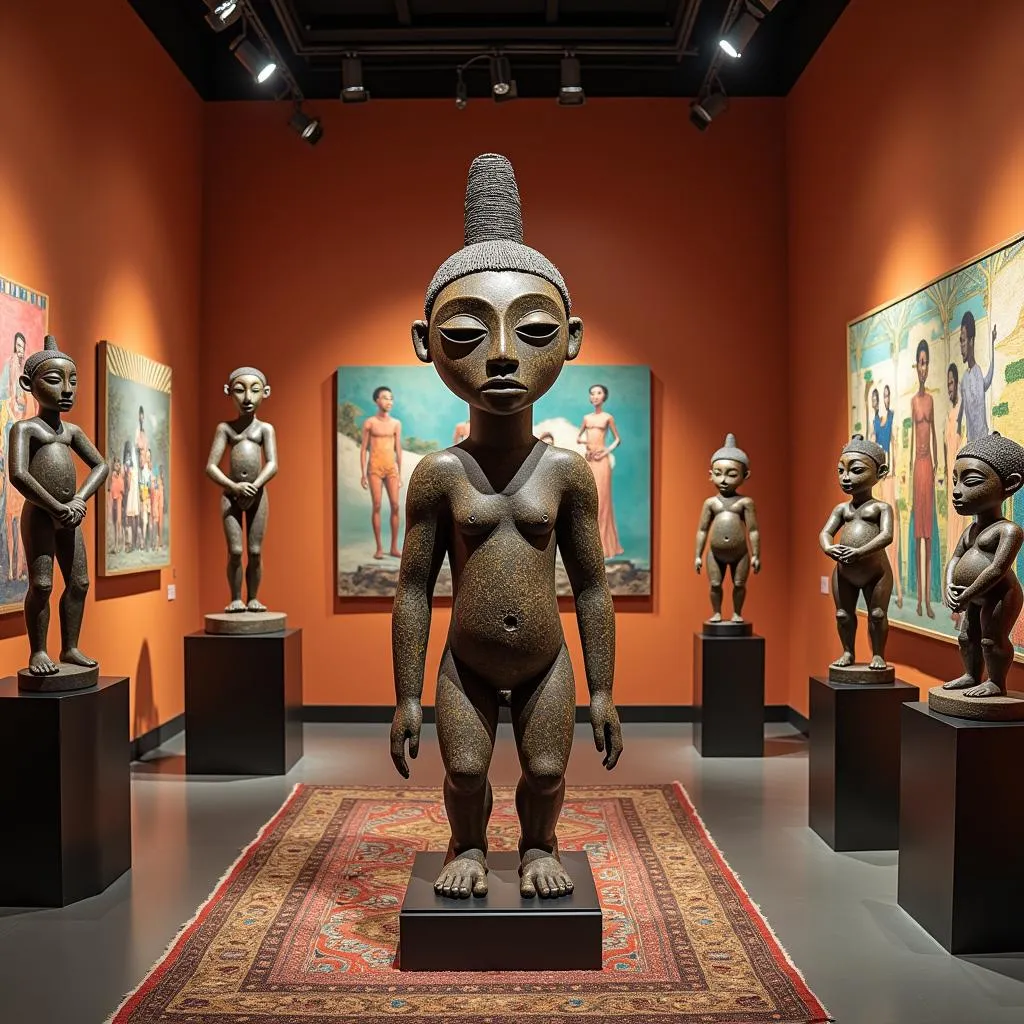Discovering the African Ostrich: The World’s Largest Bird
The African Ostrich, instantly recognizable with its towering height and long, powerful legs, is a true marvel of the avian world. Native to the savannas and grasslands of Africa, this flightless bird holds the title of the world’s largest and heaviest living bird species. Their unique appearance, fascinating behaviors, and surprising adaptations make them a captivating subject of study.
Unveiling the Characteristics of the African Ostrich
Standing at an impressive height of up to 9 feet (2.7 meters), the African ostrich dwarfs all other bird species. Their wingspan can reach up to 6 to 8 feet (2 to 2.5 meters), although they are flightless. The males, easily distinguished by their black plumage and white tail feathers, are slightly larger than the females who sport a more subdued brown coloration. Both sexes possess a long, bare neck, a small head, and large eyes – the largest of any land animal.
 African ostrich running across savanna
African ostrich running across savanna
Adaptable Survivors: Thriving in Harsh Environments
African ostriches have evolved remarkable adaptations that allow them to flourish in the challenging environments they call home. Their powerful legs aren’t just for show – they allow ostriches to reach speeds of up to 43 miles per hour (70 kilometers per hour) in short bursts, making them the fastest birds on land. These powerful limbs also deliver a formidable kick, capable of deterring predators like lions, leopards, and hyenas.
Their diet, adapted to the arid regions they inhabit, consists mainly of roots, seeds, insects, and even small reptiles. Interestingly, ostriches swallow pebbles and grit, which help grind down food in their gizzards, aiding digestion.
Social Beings: Navigating Life in a Flock
Contrary to popular belief, ostriches do not bury their heads in the sand. This myth likely stems from their habit of lowering their heads to the ground to camouflage themselves or to swallow stones for digestion.
African ostriches are actually highly social animals, living in groups of up to 100 individuals. Within these flocks, a clear hierarchy exists, with a dominant male and female leading the group. Communication plays a crucial role in their social interactions, utilizing a range of hisses, booms, and other vocalizations.
The Allure of Ostrich Farming
Beyond their captivating presence in the wild, African ostriches have gained economic significance through ostrich farming. Primarily practiced in South Africa, ostrich farms contribute to various industries.
Ostrich meat, a lean and flavorful red meat, is gaining popularity as a healthy alternative to beef. Ostrich leather, known for its durability and unique quill patterns, is highly sought after for high-end fashion accessories and footwear. Furthermore, ostrich feathers are utilized in dusters, fashion accessories, and ceremonial costumes.
Conservation Efforts: Protecting a Vulnerable Species
While not currently endangered, African ostrich populations have faced significant decline due to habitat loss, hunting, and the illegal wildlife trade. Fortunately, conservation efforts are underway to protect these remarkable birds.
National parks and game reserves across Africa provide safe havens for ostrich populations, allowing them to thrive in their natural habitat. Sustainable farming practices are also being promoted to ensure the long-term viability of the ostrich farming industry while minimizing its environmental impact.
Frequently Asked Questions about African Ostriches
Q: Can ostriches really fly?
A: No, ostriches are flightless birds. Their wings are too small in proportion to their large body size to allow for flight.
Q: What is the lifespan of an African ostrich?
A: African ostriches can live for 40 to 50 years in the wild, though their lifespan in captivity can be even longer.
Q: How do ostriches defend themselves?
A: Ostriches rely on their incredible speed and powerful legs for defense. Their kicks are strong enough to deter even large predators.
Q: Do ostriches really bury their heads in the sand?
A: No, this is a myth. Ostriches may lower their heads to the ground for camouflage or to swallow stones for digestion.
Q: Where can I see African ostriches in the wild?
A: African ostriches are found in various countries across sub-Saharan Africa, including 10 African countries names. Many national parks and game reserves offer excellent opportunities for ostrich sightings.
Looking for more captivating insights into the African continent?
For a fascinating glimpse into the persistence hunting techniques employed by the San people in the Kalahari Desert, check out this article on the African Kalahari Desert kudu persistence hunt. Or perhaps you’d be intrigued by a closer look at the North African ostrich.
Need assistance or have more questions?
Feel free to reach out! Contact us at Phone Number: +255768904061, Email: kaka.mag@gmail.com, or visit us at Mbarali DC Mawindi, Kangaga, Tanzania. We have a dedicated customer service team available 24/7.



